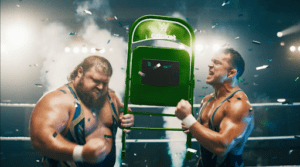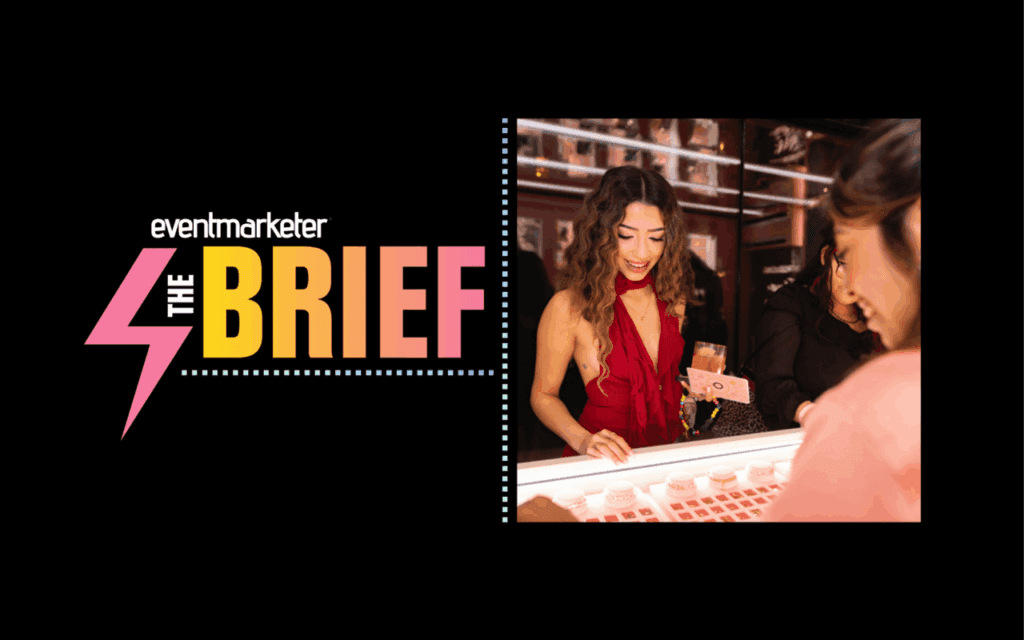
It was February when rapper Lupe Fiasco twittered his large base of followers that something big would happen in New York’s Union Square on a certain day. About 2,000 fans gathered, most expecting to see Fiasco perform, but were instead greeted with a massive QR code projected onto a tall building. Once scanned, the code unlocked exclusive preorders for his latest album, “Lasers.”
Fiasco has more than 530,000 Twitter followers and 1.6 million Facebook fans that he messages regularly. Even though his fans, no doubt, had been awaiting the new disc, the experience in Union Square turned people off.
“You don’t want to tick them off,” Eric Ginsberg, an associate at Team Epic, said.
Getting it right is even more important as the use of QR codes rapidly expands, moving far beyond electronics and entertainment where consumers are already in tune with new technologies and the codes work well to unlock movie trailers and demonstration videos. Home Depot and Kellogg just introduced large-scale QR code programs. Specialty retailer Brookstone placed codes near merchandise in 30 locations that link to product reviews and greater product selections. Dentyne is using the codes in search of an older demographic and many other brands are introducing the codes to consumers who may not be as familiar with the technology. Nielsen estimates that one in two Americans will have a smartphone by Christmas, compared to just one in 10 in the summer of 2008. And last year, there was a 1600% increase in the number of scans per day, according to Scanbuy.
Experts say there are three steps to success: understanding the target audience, education and content.
The target
Define your audience. Are they the early adopters or do they need instruction to have a good experience? What is the penetration of smartphones among your target? What are their data plan stats? Where do they shop? When would they have time to scan a code?
“Media and context placement matters,” Brett Leary, vice president, director mobile marketing for Digitas, said. “Think in terms of a mother with two kids in tow. Does she have time to take out her phone find the right app and scan the code? It takes time. In that context, in store or on a shelf talker may not be the best placement, but a print ad or bus stop where she has moments of time would be.”
Who’s using smartphones?
The breakdown of who has seen a code is about even between men and women, according to MGH’s QR Code Usage and Interest Survey, February 2011. More than half (52%) of consumers ages 18 to 34 reported seeing the codes, compared to 34% of 35 to 55 year olds and 14% of those older than 55. Fifty-six percent reported seeing the codes on a product, 46% in a magazine and 45% on a coupon. The number of those surveyed who said they actually used the code was 49%, 53% scanned it to get a coupon or discount, 52% to access additional information, 33% to enter a sweepstakes, 26% to sign up to receive more information and 24% to access a video, the survey of 415 smartphone users found.
Next page: Using QR codes to introduce a product
Education

Last year, Kellogg began introducing codes to its consumers in multiple marketing plans and programs across all of its brands to begin engagement with its consumers via mobile. The initial goal is education, getting its consumers aware of the codes and that there is content behind it. To do that, it incorporates instructions on shelf talkers, P-O-P and on pack. It also offers options for consumers who don’t have smart phones.
To introduce Crunchy Nut cereal to U.S. consumers, a code is placed on the back of the box with messaging that reads: “Crunchy Nut is so delicious you won’t want to wait until tomorrow to eat it. Luckily, you don’t have to.” Instructions provide a text or scan option. The unlocked content reinforces the on-pack messaging with a video experience in some other part of the world where it is time for breakfast. Another Kellogg brand, Cheez-It is running an on-pack Earth Day promotion linking a code to a contest to win a Ford Hybrid.
“Kellogg is dipping a toe in the mobile space efficiently and with scale,” said David Apple, chief marketing officer, Augme Technologies Inc., which is working with Kellogg and its Ad Life mobile platform on the project. “This is phase one of a long-term approach to drive bigger engagements.”
Content

Last month, Home Depot partnered with Scanbuy, Inc. to launch what it called a national communications strategy using bar codes to give customers immediate access to a variety of content, including product ratings and reviews, how-to-guides and videos on specific products. Home Depot edits the barcodes, enabled by the ScanLife system, in real time as new content is created. It also receives a host of data such as which products customers are most interested in, the location of those interactions and representative demographics.
The codes were introduced through a print ad featuring Martha Stewart Living kitchens and placed in tens of millions of direct mail pieces. The advanced code brings up five options: a video of Martha Stewart introducing her products; examples of the products in use in homes; links to color options; frequently asked questions and requests for more information.
“Home Depot can change what each of those menu items are whenever they want,” Mike Wehrs, CEO of Scanbuy, said. “That’s a powerful thing, to be able to change what code means even after its deployed.”
The codes are also being used online linking to kitchen design consults or to automatically dial a number to connect with a live person. At events, like its sponsorship of NASCAR, fans scan a code to follow the team or join a loyalty program. Codes encountered outside stores enable mobile users to make purchases from their phones. In stores, codes are placed on store shelves and signage with explanations about how to download apps to scan the codes.
“The manufacturers can place their own codes on packaging under specific guidelines which are meant to give our customers a consistent and positive experience from any code they scan,” Tom Sweeney, senior director of online strategy for Homedepot.com, said. “The technology is very versatile, so there is strong interest from virtually every category. Big ticket items like appliances may be ideal for buying guides and user generated content like ratings and reviews , while the building material products may be more suitable for how-to or project material lists.”
Next Page: QR mistakes to avoid
Don’t make this mistake
The capability to edit codes in real-time has its benefits.
A major auto manufacturer bought an ad for the back cover of a magazine with tens of millions of subscribers that incorporated a QR code. The problem? There was a typo in the code (the second slash was missing from the link, http:/) and linked to a 404 error message with no way to fix it. In another example, a major retailer used a vendor to create end-caps with codes to unlock content for a makeup brand. The code looked like it had been dusted with pink talcum power. The problem? It looked nice, but only two scanners could pick up the code.
“The retailer had to put stickers on the end-caps at a cost of $60,000,” Wehrs said.
Expanding the base

Dentyne is using QR codes to increase awareness and trial among an older demographic: 22 to 29 year olds. Breath freshening, a well-understood attribute of the gum, is the basis of the “Safe Breath Alliance” promotion.
Alcone Marketing Group created a code using Miscrosoft Tag that when snapped on pack or on P-O-P launches a video featuring actor and spokesperson Marlon Wayans. The video directs users to a Facebook page where they are invited to join the alliance. As an added incentive to “like” the page, an instant-win game that ended March 31 offered 100 daily prizes. The content linked from the code is being refreshed throughout the year.
We wanted to “restore the brand’s swagger,” said Alyson Tardif, senior vice president and group account director, Alcone.
Where things stand
Overall, results on the response to the codes have been mixed, according to MGH’s survey. Adoption is increasing, as 32% of U.S. smartphone users have scanned a QR code while 70% said they plan to use a QR code again or for the first time.
“But the reviews on how retailers use QR codes is still a mixed bag and opinions vary on the best application of the technology for brands,” the report found.
Like Fiasco’s followers and fans, the early adopters understand the technology and are the first to use the codes. They are the trendsetters and are prolific at writing blogs and broadcasting messages good or bad about their experiences. If the experience is not relevant or disappointing, or worse, doesn’t work at all, it hurts overall adoption rates.
“What the codes link to can make or break this,” Team Epic’s Ginsberg said.


 Network
Network

